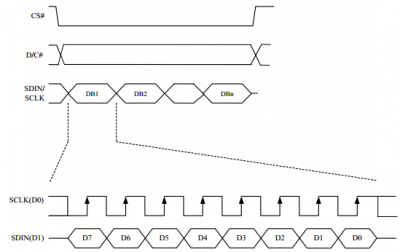Template: Pico e-Paper 2.9 Spec
Overview
2.9inch EPD (Electronic Paper Display) Module For Raspberry Pi Pico, 296 × 128 Pixels, Black / White, SPI Interface.
Specification
- Dimension: 2.9inch
- Outline dimensions (raw panel): 79.0mm × 36.7mm × 1.05mm
- Outline dimension(with driver board): 82.0mm × 38.0mm
- Display size: 66.89mm × 29.05mm
- Operating voltage: 3.3V
- Interface: SPI
- Dot pitch: 0.227 × 0.226
- Resolution: 296 × 128 pixels
- Display color: Black, White
- Greyscale: 4
- Partial refresh time: 0.6s
- full refresh time: 3s
- Refresh power: 26.4mW (typ.)
- Standby current: <0.01uA (almost none)
- Touch points: 5 (MAX)
- Touch type: Capacitive
- Touch interface: I2C (Address: 0x48)
- Touch panel: Toughened glass panel
- 【Note】
- Refresh time: The refresh time is the experimental results, the actual refresh time will have errors, and the actual effect shall prevail. There will be a flickering effect during the global refresh process, this is a normal phenomenon.
- Power consumption: The power consumption data is the experimental results. The actual power consumption will have a certain error due to the existence of the driver board and the actual use situation. The actual effect shall prevail.
- Refresh time: The refresh time is the experimental results, the actual refresh time will have errors, and the actual effect shall prevail. There will be a flickering effect during the global refresh process, this is a normal phenomenon.
Note: The local brush does not have a four-grayscale display, only the full brush has, refer to Pico-ePaper-2.9
SPI Communication Timing
Since the ink screen only needs to be displayed, the data cable (MISO) sent from the machine and received by the host is hidden here.
- CS: Slave chip select, when CS is low, the chip is enabled.
- DC: data/command control pin, write command when DC=0; write data when DC=1.
- SCLK: SPI communication clock.
- SDIN: SPI communication master sends, the slave receives.
- Timing: CPHL=0, CPOL=0 (SPI0).
【Remarks】For specific information about SPI, you can search for information online.
Working Protocol
This product is an E-paper device adopting the image display technology of Microencapsulated Electrophoretic Display, MED. The initial approach is to create tiny spheres, in which the charged color pigments are suspended in the transparent oil and would move depending on the electronic charge. The E-paper screen display patterns by reflecting the ambient light, so it has no background light requirement. (Note that the e-Paper cannot support updating directly under sunlight).
How to define pixels
In a monochrome picture we define the pixels, 0 is black and 1 is white.
White:□: Bit 1
Black:■:Bit 0
- The dot in the figure is called a pixel. As we know, 1 and 0 are used to define the color, therefore we can use one bit to define the color of one pixel and 1 byte = 8pixels.
- For example, If we set the first 8 pixels to black and the last 8 pixels to white, we show it by codes, they will be 16-bit as below:

For the computer, the data is saved in MSB format:

So we can use two bytes for 16 pixels.
